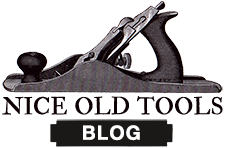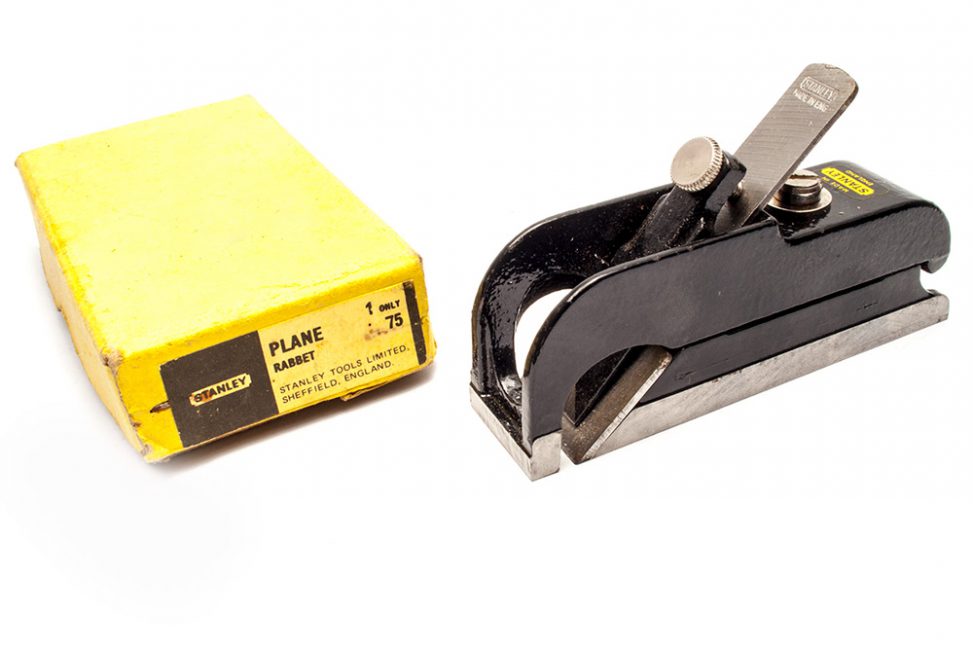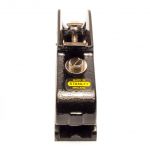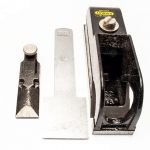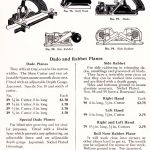These planes were made until the 80’s in the US, then in England. I can’t find new ones for sale anywhere, so I guess they’re not made anymore. It’s a handy thing, although I have similar planes from other manufacturers that I like a bit better.
Patrick Leach, on his excellent and essential Blood and Gore site, has this to say about it:
#75 Bull nose rabbet plane, 4″L (4 1/8″, 1936 on), 1″W (1 1/16″, 1936 on), 5/8lbs, 1879-1973.
This is a cheap, little rabbet plane, that is very useful in the shop. It has a top section that arches forward of the blade to form the front portion of the sole. This section is adjustable, forward and backward, to regulate its mouth. This is done by means of a simple screw, which is threaded to lower section, the rear portion of the sole, of the plane. A washer sits under the screw, with the earlier examples having a brass washer. The plane does not have its number cast into it. The lower portion of the plane’s sides is machined, with the rest above the machined area japanned.
The lever cap has a thumb screw to hold it and the iron in place (earlier examples will have a slotted screw). There are two lugs cast into the top section under which the lever cap fits. Sometimes the lever cap is snapped and repaired. The plane can choke easily since the lever cap serves as the chip breaker and it sits well back from the cutting edge. Despite the tendency to choke, the plane is useful for trimming and odd rabbeting. I found it very useful when cleaning up years of grunge and paint within the window frames of double hung sash.
The section of the sole ahead of the iron is not co-planar with the sole behind the iron. The plane is purposely made this way to assist it with its cut (you guys what owns the ‘lectrical jointahs should know why the plane’s sole is the way it is) so there’s no need to practice sole lapping on it.
